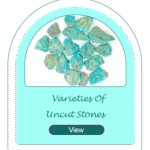Mag
How to Easily Distinguish Real Turquoise from Fake: A Practical Guide
How to Easily Distinguish Real Turquoise from Fake: A Practical Guide
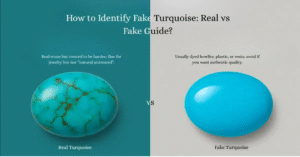
Introduction — The Importance of Turquoise and the Problem of Counterfeits
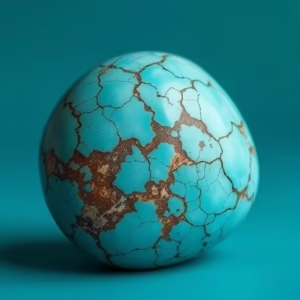
Turquoise has been cherished for millennia as a gemstone of vivid blue-green hues, symbolic in many cultures. Its rarity and beauty make it highly valued, but also a frequent target for deceit and imitation. Because natural, high-quality turquoise is limited, many sellers present dyed, stabilized, or fully synthetic substitutes as “real” turquoise. Therefore, for consumers, gem dealers, and collectors, knowing how to distinguish real turquoise from fake or treated material is essential to avoid being misled.
Simple Methods (Without Advanced Instruments)
These techniques require only basic tools or observations and can often weed out obvious fakes.
1. Visual Inspection: Color, Uniformity, and Surface
-
Natural turquoise rarely has a perfectly uniform color. Slight variations, subtle mottling, or changes in saturation are normal.
-
If the color is overly vivid, artificial, “too perfect,” or shows unnatural consistency over cracks, that’s a red flag.
-
Look at edges, cracks, and recesses: dyed fakes often show color bleeding or pooling of dye in cracks.
-
The surface finish: real turquoise might show some micro-irregularities; perfectly smooth, glassy surfaces may indicate plastic or coating.
2. The Matrix (Veins / Webbing)
-
Many real turquoise specimens exhibit a matrix — thin lines or veins of host rock (e.g. brown, black, gray).
-
However, note that some fakes simulate “matrix” by painting or drawing lines; so matrix alone isn’t definitive proof.
3. Scratch / Hardness Test (with caution)
-
Natural turquoise has a Mohs hardness around 5 to 6.
-
Lightly and cautiously use a copper coin or a steel needle on a non-visible spot. If it scratches too easily or gouges with minimal force, it may be a softer imitation (like howlite or magnesite).
-
But be careful: such tests can damage the stone.
4. Acetone / Solvent Test
-
Use a cotton swab moistened with acetone (nail polish remover) on a discreet area (back or side).
-
If blue dye rubs off onto the swab, the stone is likely dyed material rather than genuine turquoise.
-
Some treatments or coatings may dissolve or dull under solvents—but natural turquoise (especially untreated) should not lose significant color in this test.
5. Heft / Specific Gravity / Weight Feel
-
Genuine turquoise tends to feel denser / heavier than many plastic or resin imitations of the same size.
-
If the piece feels unusually light, it may be a hollow or resin-filled imitation.
-
Precise measurement of specific gravity (density) is better done with accurate scales and comparison to known standards.
6. Magnification / Microscopic Texture
-
Under a jeweler’s loupe or microscope, real turquoise may show granular texture, fine pits or tiny inclusions.
-
In contrast, fakes (especially plastic or glass) may appear too smooth, show flow lines, or a uniform internal texture.
Advanced Methods (For High Confidence)
To be absolutely sure, gemological or laboratory methods are used.
1. Raman Microscopy / Spectroscopy
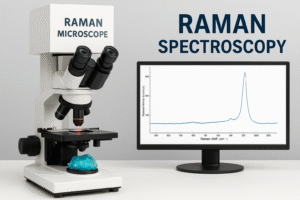
-
Raman spectroscopy identifies molecular vibrations, which helps distinguish turquoise from dyes, resins, or simulants.
-
In a study titled “Fake turquoises investigated by Raman microscopy,” only 1 of 5 samples turned out to be genuine stabilized turquoise—others were dyed minerals or composites. ResearchGate+1
-
Raman is non-destructive and effective for identifying adulterants. ResearchGate+1
2. Infrared Spectroscopy (FTIR / micro-FTIR)
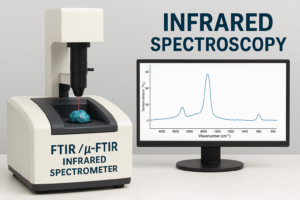
-
Infrared (IR) spectroscopy can detect organic resins, coatings, waxes, or treatments.
-
A paper “Investigation of turquoise imitations and treatment with analytical pyrolysis and infrared spectroscopy” explains how IR and pyrolysis can reveal treatments such as epoxy or polymer impregnation. Academia
3. X-Ray Fluorescence (XRF) / ED-XRF
-
XRF can provide elemental composition (e.g. levels of copper, aluminum, phosphorus) which helps confirm whether a specimen is consistent with true turquoise composition.
-
Combined techniques (XRF + IR) have been used in research to discriminate authentic turquoise from fakes. ScienceDirect+1
4. Laser Ablation ICP-MS + Chemometrics
-
In advanced labs, small portions of the stone are ablated by laser and elemental/trace compositions are measured via ICP-MS.
-
By comparing trace element “signatures” and using statistical models, one can classify whether a specimen is natural, treated, or synthetic, and even estimate geographic origin.
-
This method is expensive and not accessible to average buyers but is very reliable in research settings.
.
References / Scientific Sources
-
“Fake turquoises investigated by Raman microscopy” — Nathália D’Elboux Bernardino, Celly M. S. Izumi, Dalva L. A. de Faria; Forensic Science International, 262 (2016). ResearchGate+1
-
“Raman and infrared spectroscopic study of turquoise minerals” — J. Čejka et al. (2015). ScienceDirect+1
-
“Investigation of turquoise imitations and treatment with analytical pyrolysis and infrared spectroscopy” — Bettina Schwarzinger et al. Academia
-
“Provenancing turquoise: a difficult task” — A. Queffelec (2020), discussing challenges in distinguishing turquoise origins and falsification issues. OpenEdition Journals



